Trane RTHD User Manual
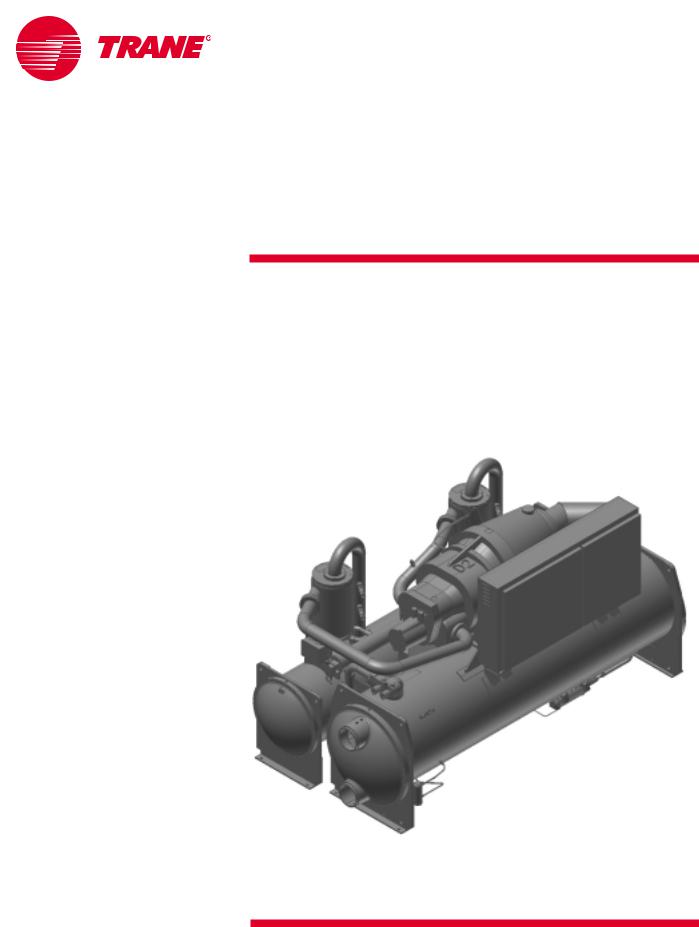
Series R™ Helical Rotary
Liquid Chillers
Model RTHD
175-450 Tons (60 Hz)
125-450 Tons (50 Hz)
Built for Industrial and Commercial Applications
April 2003 |
RLC-PRC020-EN |
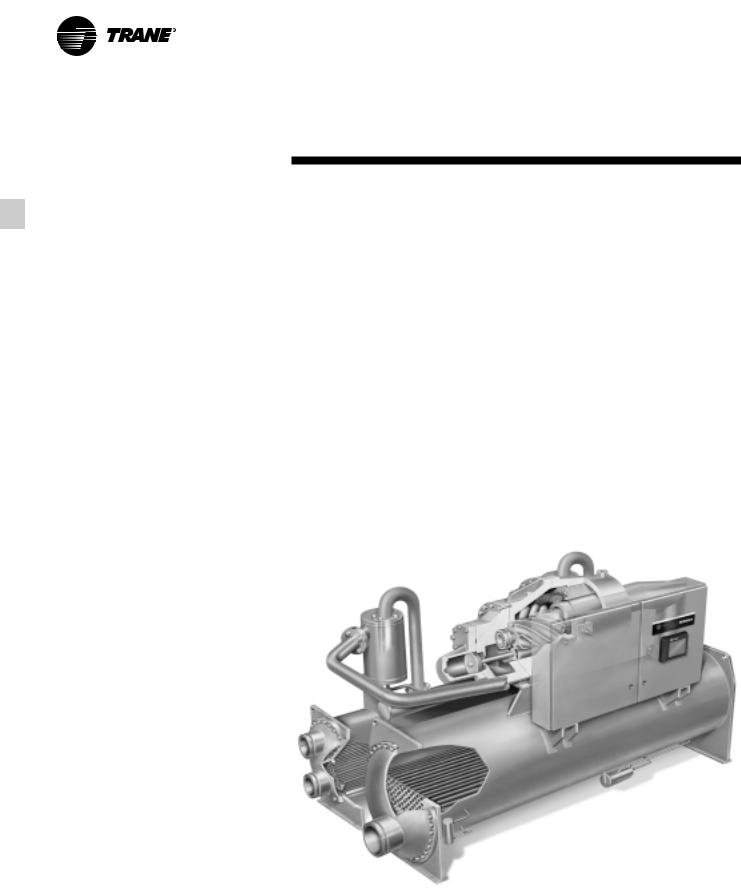
Introduction
To meet a wide range of applications in the medium-tonnage, water-cooled market, Trane is proud to introduce the model RTHD helical rotary liquid chiller. The introduction of this next-generation chiller an exciting step forward in application versatility, ease of installation, control precision, reliability, energy-efficiency, and operational costeffectiveness. The new RTHD chiller is designed to deliver proven Series R performance, plus all the benefits of an advanced heat transfer design and a low-speed, direct-drive compressor.
Important Design Advances and New Features
Major design advances include:
•Higher full-load energy efficiency reduces both operating and life-cycle costs.
•CH530 controls enable:
-scrolling access to inputs and operating information via the LCD touch-screen display;
-freedom from interoperability concerns with LonMark communications;
-job-specific communication options that allow greater reporting flexibility.
•Improved startup temperature capabilities and reduced sensitivity to condenser water temperatures alleviate the most common startup concerns.
•Removed Liquid Vapor Separator, providing lighter unit weight and simplified refrigerant piping, for less expensive handling, separation, and installation.
The industrial-grade design of the Series R helical rotary chiller is ideal for both industrial and commercial markets, in applications such as office buildings, hospitals, schools, retail buildings, and industrial facilities. The linear unloading compressor, wide operating temperature range, advanced controls, electronic expansion valve, short anti-recycle timers, and industry-leading efficiencies mean that this latest Trane Series R chiller is the perfect choice for tight temperature control in almost any application temperatures, and under widely varying loads.
© 2003 American Standard Inc. All rights reserved. |
RLC-PRC020-EN |
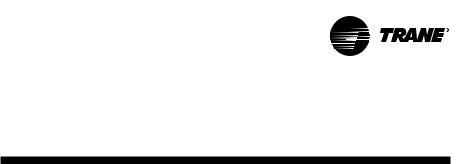
Contents
Introduction |
2 |
Features and Benefits |
|
4 |
|
Options |
|
6 |
|
Display |
|
8 |
|
Application Considerations |
|
9 |
|
Selection Procedure |
|
11 |
|
Model Nomenclature |
|
13 |
|
General Data |
|
15 |
|
Electrical Data and Connections |
|
17 |
|
Dimensions and Weights |
|
20 |
|
Mechanical Specifications |
|
27 |
|
|
|
RLC-PRC020-EN |
3 |

Features and
Benefits
Application Versatility and High
Performance
•Screw compressor technology and the electronic expansion valve provide reliable performance in an expanded range of operating temperatures.
•Tight water temperature control extends to operation of multiple chillers in parallel or series configurations, offering further system design flexibility for maximum efficiency.
•Advanced design enables chilled water temperature control to +/- 0.5°F (.28°C) for flow changes up to 10 percent per minute, plus handling of flow changes up to 30 percent per minute for comfort cooling.
•Two-minute stop-to-start and fiveminute start-to-start anti-recycle timer allows tight chilled water temperature control in constant or transient lowload applications.
•LonMark communications capability provides excellent, trouble-free interoperability.
Applications in this catalog specifically excluded from the ARI certification program are:
•Low temperature applications, including ice storage
•Glycol
•50Hz units below 200 nominal tons
•Generic Building Automation System points are available for easy access to operational information.
•Extensive information on professional design selection and layout is available in a simple, highly readable electronic format.
•Standard model RTHD configurations are in stock and available for immediate delivery, and Trane offers the fastest ship cycles in the industry for built-to- order units.
•Industrial / Low Temperature Process Cooling – Excellent operating temperature range and precise control capabilities enable tight control with single chiller or series configuration.
•Ice/Thermal Storage – Specifiers and operators benefit from dual setpoint control and industry-leading temperature, efficiency, and control capabilities, plus outstanding support through partnership with Calmac, a strong Trane partner providing proven installation examples, templates, and references that minimize design time and energy costs.
•Heat Recovery – Maximum condenser temperature exceeds those of previous technologies, providing hot water and tight control that minimizes operating costs for the chilled water plant and boiler/hot water heater, and consistent dehumidification.
Simple, Economical Installation
•Compact size makes the model RTHD well suited for the retrofit and replacement market.
•All units fit through standard doublewidth doors.
•Bolt-together construction makes for fast, easy unit disassembly.
•Small RTHD footprint saves valuable equipment room space and alleviates access concerns for most retrofit jobs.
•Lightweight design simplifies rigging requirements, further reducing installation time requirements and costs.
•Full factory refrigerant or nitrogen and oil charges reduce required field labor, materials, and installation cost.
•Only evaporator and condenser water piping is required; no starter water cooling (with its associated safety concerns) or field piping is necessary.
•Oil cooler and purge system connections have been eliminated.
•Simple power connection simplifies overall installation.
•Standard unit-mounted starter for Wye-Delta and Solid State eliminates additional jobsite installation considerations and labor requirements.
•Trane has conducted extensive factory testing, and also offers options for inperson and/or documented system performance verification.
•CH530 controls easily interface with Tracer Summit™ building automation systems through single twisted-pair wire.
Pueblo
Business Unit
4 |
RLC-PRC020-EN |
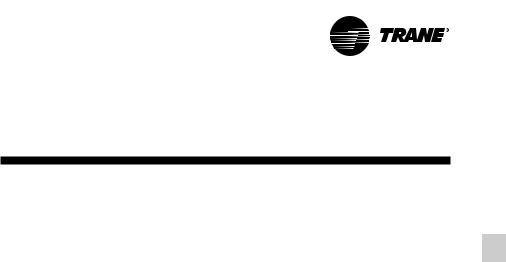
Features and
Benefits
State-of-the-Art, Precision Control
•Microprocessor-based CH530 controls monitor and maintain optimal operation of the chiller and its associated sensors, actuators, relays, and switches, all of which are factoryassembled and extensively tested.
•Easy interface with computers hosting Tracer Summit™ building automation/ energy management systems allows the operator to efficiently optimize comfort system performance and minimize operating costs.
•PID (proportional integral derivative) control strategy ensures stable, efficient chilled water temperature control, maintaining +/- 1°F (0.56°C) control by proactively reacting to instantaneous load changes of up to 50 percent.
•Adaptive Control™ attempts to maintain chiller operation under adverse conditions, when many other chillers might simply shut down.
•Easy-to-use operator interface displays all operating and safety messages, with complete diagnostics information, on a highly readable panel with a scrolling touch-screen display.
•The RTHD features a complete range of chiller safety controls.
•Over 120 diagnostic and operating points are available, with standard displays including chiller current draw, condenser pressure, and evaporator pressure.
Reliability and Ease of Maintenance
•Direct drive, low-speed compressor – a simple design with only three moving parts – provides maximum efficiency, high reliability, and low maintenance requirements.
•Electronic expansion valve, with fewer moving parts than alternative valve designs, offers highly reliable operation.
•Suction gas-cooled motor stays uniformly cool at lower temperatures for longer motor life.
•The Trane helical rotary compressor is a proven design resulting from years of research and thousands of test hours, including extensive testing under extraordinarily severe operating conditions.
•Trane is the world’s largest manufacturer of large helical rotary compressors, with tens of thousands of commercial and industrial installations worldwide demonstrating a reliability rate of greater than 99 percent in the first year of operation.
Operating and Life Cycle
Cost-Effectiveness
•Electronic expansion valve enables exceptionally tight temperature control and extremely low superheat, resulting in more efficient full-load and part-load operation than previously available.
•Precise compressor rotor tip clearance ensures optimal efficiency.
•Condenser and evaporator tubes use the latest heat transfer technology for increased efficiency.
•The RTHD includes standard electrical demand limiting.
•Chilled water reset based on return water temperature is standard.
•High compressor lift capabilities and tight chilled water temperature control allow highly efficient system design with minimal operational concerns.
Design capabilities include:
•variable primary flow;
•series chiller arrangements for evaporator and/or condenser;
•low evaporator and condenser flow.
RLC-PRC020-EN |
5 |
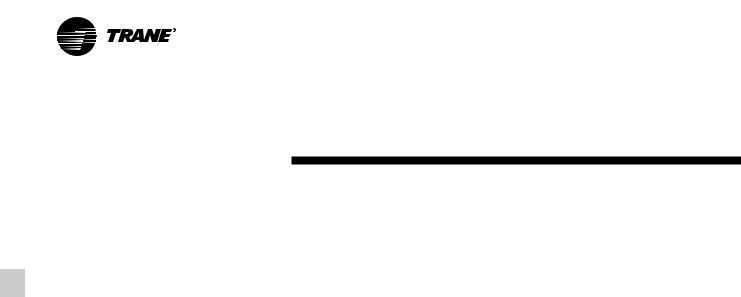
Options
Model RTHD Options
Insulation
All low-temperature surfaces are covered with 3/4" (19.05 mm) Armaflex II or equal (K = 0.28) insulation; this includes the evaporator and water boxes, suction line, motor housing, and liquid/vapor separator.
Low-Temperature Evaporator
Addition of an oil cooler to the oil circuit enables evaporator operation down to minimum leaving water temperature of 10°F (-12.2°C).
High-Temperature Condenser
Addition of an oil cooler to the oil circuit enables condenser operation up to maximum leaving water temperature of 114°F (45.6°C).
Smooth-Bore Condenser Tubes
Smooth-bore copper or premium cupronickel condenser tubes, 3/4" (19.05 mm) in diameter with .035" (0.889 mm) wall thickness, are available for high fouling water applications.
Refrigerant Isolation Valves
Factory-installed condenser inlet and outlet refrigerant valves allow isolation of the full refrigerant charge in the condenser while servicing the chiller.
Marine Water Boxes
Addition of marine water boxes for the condenser allows tube cleaning without water pipe interference.
300 psig Evaporator and Condenser Water Boxes
Water boxes are designed for 300 psig maximum waterside working pressure, and grooved pipe water connections are provided for ease of installation.
Tracer Summit Communications
Link to factory-installed, tested communication board, via single twisted-pair wiring, adds Tracer Summit communications to the system.
LonTalk LCI-C Interface
LonTalk (LCI-C) communications capabilities are available, with communication link via single twistedpair wiring to factory-installed, tested communication board.
External Chilled Water Setpoint
External Chilled Water Setpoint is communicated to a factory-installed, tested communication board through a 2-10Vdc or 4-20mA signal.
External Current Limiting
External Current Limit Setpoint is communicated to a factory-installed, tested communication board through a 2-10Vdc or 4-20mA signal.
External Base Loading
External Base Loading is communicated to a factory-installed and tested communication board through a 2-10Vdc or 4-20mA signal.
Ice Making Control
Controls and safeties allow operation with brine temperatures down to 20°F (-6.7°C) , and dual setpoints enable both ice making and daytime comfort cooling.
Programmable Relays
Default-set, factory-installed, programmable relays allow the operator to select four relay outputs from a list of eight. Available relays are: AlarmLatching, Alarm-Auto Reset, General Alarm, Warning, Chiller Limit Mode, Compressor Running, Head Pressure Relief Request, and Tracer Control.
Chilled Water Reset – Outdoor Air Temperature
Controls, sensors, and safeties allow reset of chilled water temperature, based on temperature signal, during periods of low outdoor air temperature. (Chilled water reset based on return chilled water temperature is standard.)
Condenser-Regulating Valve Control
Chiller applies a Proportional Integrative Control (PID) algorithm to control water regulating valve via 0-10Vdc signal.
Percent of Full Run Load Amps Output
Control system indicates the active chiller percent of full run load amps, based on a 0-10Vdc signal.
Condenser Pressure Output
Control system indicates chiller differential pressure or condenser pressure, based on a 0-10Vdc signal.
Refrigerant Monitor Input
Control system indicates refrigerant monitor status of 0-100 or 0-1000 ppm (user selectable), based on a 2-10Vdc / 4-20 mA signal.
Solid State Starter
Solid State Starter is unit-mounted with a NEMA 1 gasketed enclosure. To extend starter life, contactors bypass current from the silicon control rectifiers (SCRs) after startup.
Under/Over-Voltage Protection
Unit receives protection against variations in voltage. (Current lag and spike protection is standard.)
6 |
RLC-PRC020-EN |
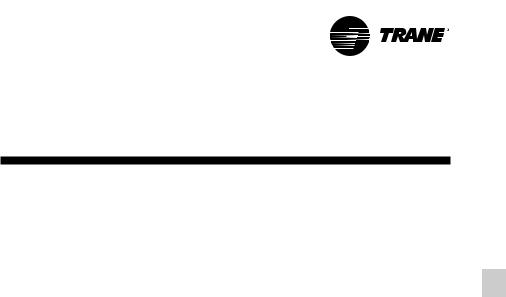
Options
Main Power Disconnect
Options:
Non-fused Disconnect
A UL-approved non-fused molded case disconnect switch, factory pre-wired with terminal block power connections and equipped with a lockable external operator handle, is available to disconnect the chiller from main power.
Standard Interrupting Capacity Circuit Breaker
A UL-approved standard interrupting molded case capacity circuit breaker, factory pre-wired with terminal block power connections and equipped with a lockable external operator handle, is available to disconnect the chiller from main power.
High Interrupting Capacity Circuit Breaker
A UL-approved high interrupting molded case capacity circuit breaker, factory pre-wired with terminal block power connections and equipped with a lockable external operator handle, is available to disconnect the chiller from main power.
Ground Fault Circuit Breaker
A UL-approved standard interrupting molded case capacity circuit breaker with ground fault interrupting capability, factory pre-wired with terminal block connections and equipped with a lockable external operator handle, is available to disconnect the chiller from main power.
More Options:
2-Way Condenser Water Regulating Valve
For water regulation, a field-installed, 2-way butterfly-type (lug-style) valve, with integral electrical operator and factory-mounted valve actuator, is available. The single-phase, reversible motor can be factory-wired for 115 VAC, 60 Hz or 220 VAC, 50 Hz; the 2-way valve is field-wired and controlled by the chiller regulating valve control output; valves are available in 6" and 8" (152.4 and 203.2 mm) sizes.
Nitrogen Charge
Unit is shipped with a nitrogen holding charge in lieu of refrigerant.
Seal Kit for Reassembly
Ideal for situations when the bolttogether construction of the RTHD will be separated for installation, this seal kit provides replacement gaskets and rings for reassembly.
Performance and Witness Tests
ARI-certified RTHD Performance and Witness Tests are available, based on requested operating points, to certify chiller performance before delivery.
RLC-PRC020-EN |
7 |
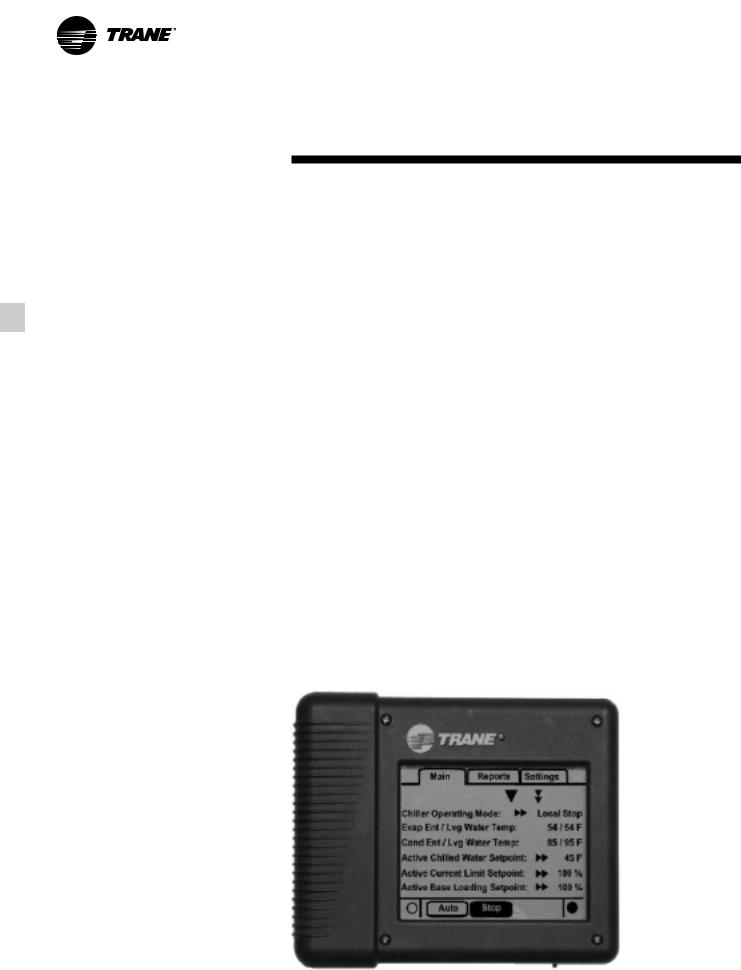
Display
LCD Touch-Screen Display with Multi-Language Support
The standard DynaView display provided with the CH530 control panel features an LCD touch-screen, allowing access to all operational inputs and outputs. This display supports eight languages: English, Spanish, Traditional Chinese, Simplified Chinese, Japanese, Portuguese (for Brazil), Korean, and Thai.
Additional Display Features Include:
•LCD touch-screen with LED backlighting, for scrolling access to input and output operating information
•Weather-proof enclosure for reliable operation in non-standard indoor environments
•Spin value buttons to allow continuously variable setpoints when applicable
•Radio and action buttons for easy, onetime actions and settings
•Single-screen, folder/tab-style display of all available information on individual components (evaporator, condenser, compressor, etc.)
•Automatic and immediate stop capabilities for standard or immediate manual shutdown
•Manual override indication
•Password entry/lockout system to enable or disable display
•Fast, easy access to available chiller data in tabbed format, including:
—Modes of operation, including normal cooling and icemaking
—Water temperatures and setpoints
—Loading and limiting status and setpoints
—Average line current
—Outdoor air temperature
—Start/stop differential timers
—Auto/Manual mode for EXV, slide valve, and head pressure control
—Pump status and override
—Chilled water reset, start point, ratio, and outdoor start point
—External setpoints, including:
-chilled water
-current limit
-ice building
-base loading
—Display specifics, including:
-date
-format
-time
-display lockout
-display units
-language setting
-Reports, listed on a single tabbed screen for easy access, including:
•ASHRAE, containing all guideline 3 report information
•Evaporator
•Condenser
•Compressor
—Evaporator, condenser, and compressor reports containing all operational information on individual components, including:
-Water and air temperatures
-Refrigerant levels, temperatures, and approach
-Oil pressure
-Flow switch status
-EXV position
-Head pressure control command
-Compressor starts and run-time
-Line phase percent RLA, amps, and volts
—Alarm and diagnostic information, including:
-Flashing alarms with touch-screen button for immediate address of alarm condition
-Scrollable list of last ten active diagnostics
-Specific information on applicable diagnostic from list of over onehundred
-Automatic or manual resetting diagnostic types
8 |
RLC-PRC020-EN |
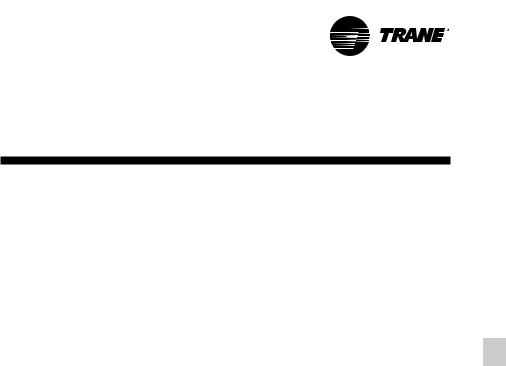
Application
Considerations
Condenser Water Temperatures
Reduced sensitivity to condenser water startup temperatures is one major enhancement in the newest-generation water-cooled Series R chiller. With the model RTHD chiller, a condenser water control method is necessary only if the unit starts with entering water temperatures below 55°F (12.8°C), or between 45°F (7.2°C) and 55°F (12.8°C), when a temperature increase of 1°F (0.56°C) per minute to 55°F (12.8°) is not possible.
When the application requires startup temperatures below the prescribed minimums, a variety of options are available. To control a 2-way or 3-way valve, Trane offers a Condenser Regulating Valve Control option for the CH530 controls. This option enables the CH530 controls to send a signal for opening and closing the valve as necessary to maintain chiller differential pressure. The 2-way valves are available as a ship-with option. Tower bypass is also a valid control method if the chiller temperature requirements can be maintained.
Trane Series R chillers start and operate successfully and reliably over a range of load conditions with controlled entering condenser water temperature. Reducing the condenser water temperature is an effective method of lowering chiller
power input required, but the ideal temperature for optimizing total system power consumption will depend on the overall system dynamics. From a system perspective, some improvements in chiller efficiency may be offset by the increased tower fan and pumping costs required to achieve the lower tower temperatures. Contact your local Trane systems solution provider for more information on optimizing system performance.
The minimum acceptable refrigerant pressure differential between condenser and evaporator is 25 psid. The chiller control system will attempt to obtain and maintain this differential at startup, but for continuous operation a design should maintain a 25°F (13.9°C) differential from evaporator leaving water temperature to condenser leaving water temperature.
Variable Evaporator Flow and Short Evaporator Water Loops
Variable evaporator flow is an energysaving design strategy which has quickly gained acceptance as advances in chiller and controls technology have made it possible. With its linear unloading compressor design and advanced CH530 controls, the RTHD has excellent capability to maintain leaving water temperature control within +/-0.5°F (0.28°C) , even for systems with variable evaporator flow and small chilled water volumes.
Some basic rules should be followed whenever using these system design and operational savings methods with the RTHD. The proper location of the chilled water temperature control sensor is in the supply (outlet) water. This location allows the building to act as a buffer, and it assures a slowly changing return water temperature. If there is insufficient water volume in the system to provide an adequate buffer, temperature control can be lost, resulting in erratic system operation and excessive compressor cycling. To ensure consistent operation and tight temperature control, the chilled water loop should be at least two minutes. If this recommendation cannot be followed, and tight leaving water temperature control is necessary, a storage tank or larger header pipe should be installed to increase the volume of water in the system.
For variable primary flow applications, the rate of chilled water flow change should not exceed 10 percent of design per minute to maintain +/-0.5°F (0.28°C) leaving evaporator temperature control. For applications in which system energy savings is most important and tight temperature control is classified as +/-2°F (1.1°C), up to 30 percent changes in flow per minute are possible. Flow rates should be maintained between the minimum and maximum allowed for any particular chiller configuration.
RLC-PRC020-EN |
9 |
